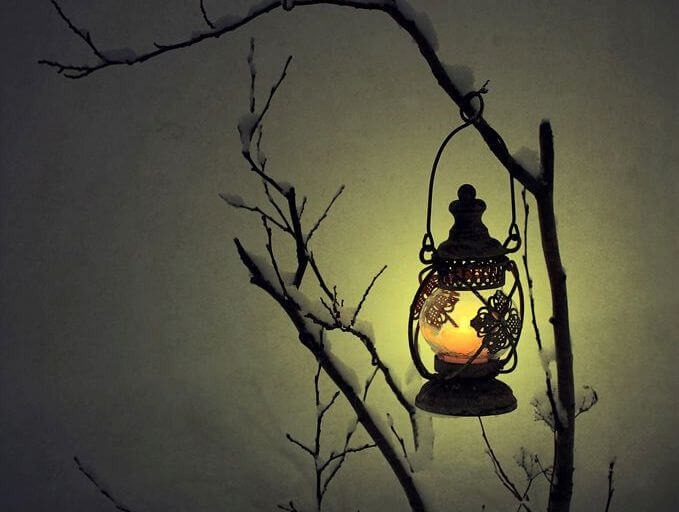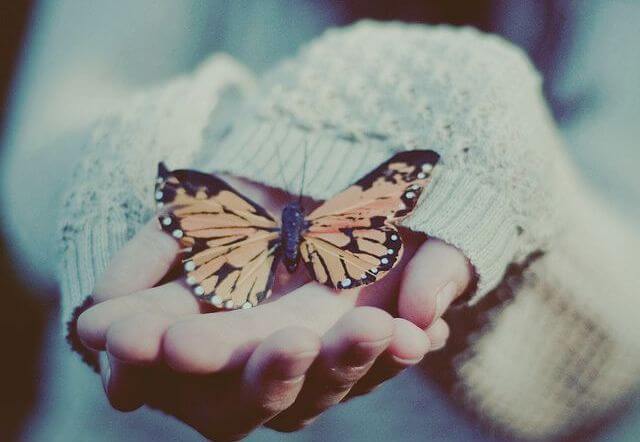The 4 Kinds of Mourning We Suffer

We as human beings live our lives by building emotional ties. So, when we lose these, it can cause us to sink down into painful mourning.
Mourning is a feeling of pain that arises when a person has left and inside us begins a battle of “I want to, but I can’t.”
“Every loss from the past that is left open becomes a burden that prevents me from taking flight, from moving forward.”
-Bernardo Stamateas-
The reality of loss

When we find ourselves drowning in a profound loss, we will realize that it is very difficult to escape this. To start with, we will probably have to deal with an internal struggle: one part accepts the loss, but the other denies it.
This is completely natural. Never blame yourself for this and do not feel bad about yourself. The reaction that you are having is as normal as can be and the highs and lows are characteristics of mourning. There are days where you feel that you are moving forward and others where you are walking slightly backwards; the important thing is your progress on a broader level.
“Do not confuse suffering with love, nor overcome pain by forgetting…”
-Margarita Rojas-
Now that we know what mourning is, it is time for you to learn about the different types.
This can help if we have already gone through a loss, if at some point in the future we have to face it, or if we need to help someone who is going through it. We can better understand what is happening to us, accept it, and thus overcome it.
The types of mourning
1. Pathological mourning
In pathological mourning, at no point do we accept the aforementioned loss. The only thing we do is deny it.
In the mind of a person who is suffering from this kind of mourning, certain mechanisms become active to protect them from the reality that hurts so badly. It is as if the person had created a sort of phantom ground on which he walks over the abyss, without paying the price of falling but also not being able to return to solid ground.
“Dealing with losses does not close them.”
-Bernardo Stamateas-
Words pop into his mind like, “Nothing happened here,” “Nothing has changed” etc. This only makes the pain take over, but gradually, like the rain that soaks through bones.
2. Denial of mourning
This seems similar to the last kind, but it has nothing to do with it. In denial of mourning, the person does not manage to express what they are feeling, which causes them extreme discomfort.
Swallowing, repressing, has never been good. Sometimes crying allows us to free ourselves from the painful feelings.
“Not letting yourself feel what is really happening will end up destroying your body and soul.”
-Bernardo Stamateas-
This kind of mourning shows up in people who think that crying or suffering will make them seem weak to others. This is why they bottle everything up inside themselves… until they can’t handle it anymore and they explode in a totally unexpected and usually uncontrollable way.

3. Intensified suffering
In intensified suffering, the person suffering lets go of everything that they are carrying in them without repressing absolutely anything. They may cry, yell, express their rage…
We may believe that this is beneficial, but such an expression of pain, possibly experienced in a more profound way, sometimes causes these people to sink into a depression.
We do not break because we fall; we fall because we are already in pieces.
It is good for us to express what we are feeling, but we must choose the proper way and channel. We also must not use our pain as a way of atoning for our guilt if we are harboring this feeling.
4. Ambiguous mourning
Ambiguous mourning usually affects us if we do not know if the person we love has died or not. This often happens with people who have disappeared, been kidnapped, etc.
This is a kind of mourning also known as “frozen mourning,” as we are kept in a state of uncertainty, waiting for news. The sensations of not understanding what is happening make this the worst kind of mourning that we can suffer.
“Whatever mourning we decide to do, let us learn that ‘pain is not a state, but a process.’ We need to count on the time and place to be able to experience that pain so that, by doing this, we will reconcile ourselves with life.”
-Bernardo Stamateas-
None of us is safe from mourning. It is something that we all go through at some point in our lives. Mourning is a painful situation, but it is also a process through which we overcome obstacles.
Knowing the types of mourning will help you understand what is really happening to you and it will open your eyes towards a more hopeful future. It is normal for you to suffer, but all storms pass… and before you know it, you will be moving forward again.

Images courtesy of Matt Wisniewski
This text is provided for informational purposes only and does not replace consultation with a professional. If in doubt, consult your specialist.








